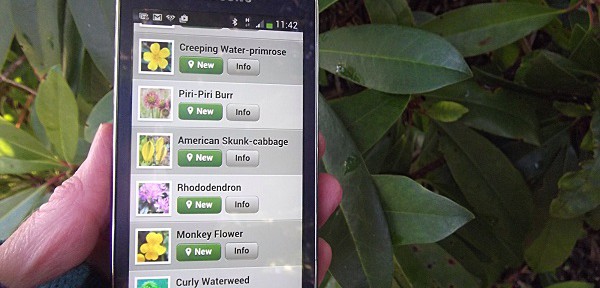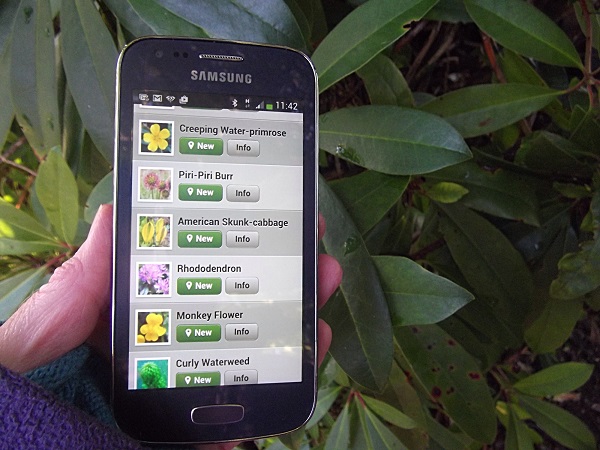
TCV staff and volunteers recently trialed a number of Citizen Science smartphone apps. There are a huge number of apps available, some of which are very simple to use and others requiring more knowledge and training. We wanted to find out about some apps that could be used in woodlands and we were very encouraged at how easy to use and interesting some of the apps we tried out were – so have a look, pick one you fancy and have a go…
Conker Tree Science Leafwatch was the easiest to use. The app supports the Conker Tree Science project which was set up to gather data about the impact and spread of the miner leaf moth. The app is quick to download and very easy to use. Volunteers simply find a horse chestnut tree, answer some questions to help them identify whether the tree is infected and take a photo. The whole process takes about 5 minutes and the app enables volunteers to identify affected trees and submit geo-located photos.
We liked using PlantTracker which is set up to gather data about non native invasive species. This app is also quick to download and very easy to use. An ID guide helps you identify the invasive species correctly, you then answer a few questions, take a photo and send off your data – very simple – and can be used all year round to record species such as rhododendron.
The OPAL tree heath survey is a great tool for learning more about trees and pests and diseases related to oak, ash and horse chestnut trees. One of our repondents noted that it was ‘simple to follow, very clear with easy navigation’. We liked the fact that it contained information on health and safety too. If you spot any serious threats whilst you’re using the app, you can report them via the Treealert: app developed by Forestry Commission.
Our trial showed us how easy it can be to help gather important information by using Citizen Science apps when out and about. Even though these apps are simple, we found that they were great for learning new information and developing identification skills. We will be continuing to use them with volunteers and promoting them to the groups we work with. Check out our website to find out more about getting involved in citizen science.
